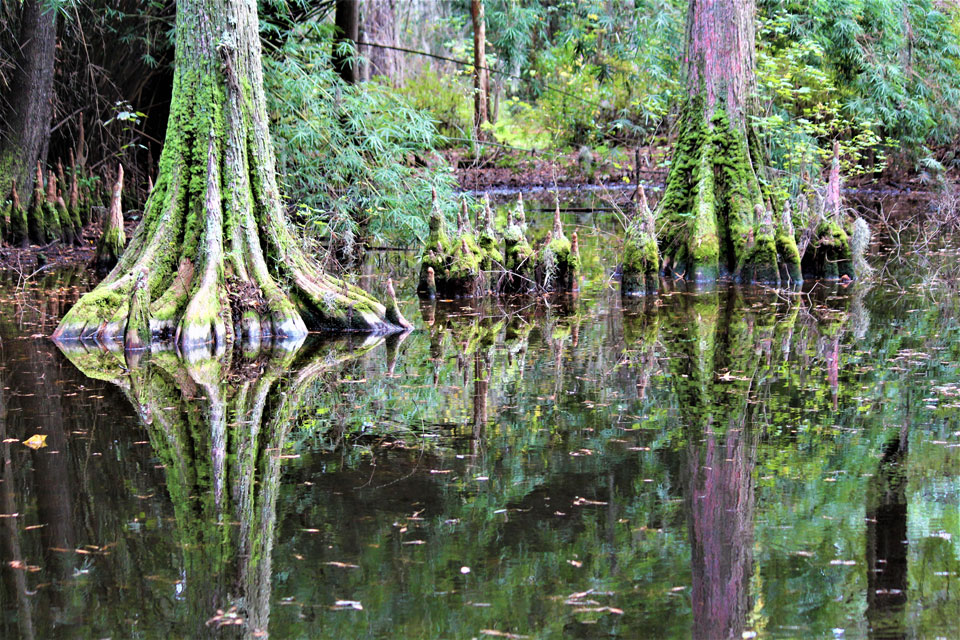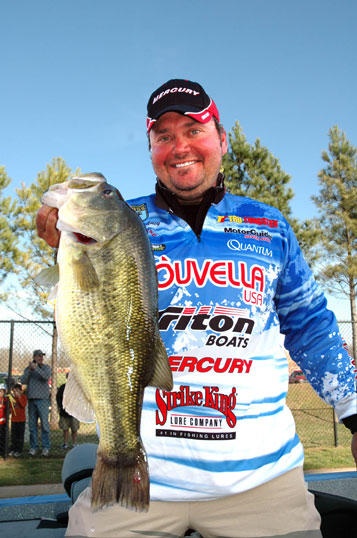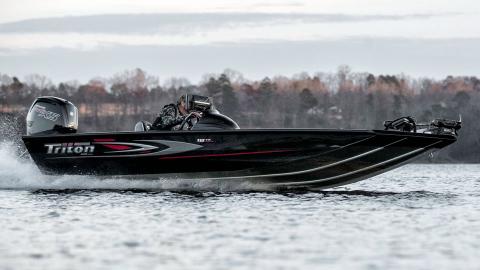45-year-old Greg Hackney of Gonzales, Louisiana, is the newest member of the Mossy Oak Fishing Team. In 2018, he won the Major League Fishing (MLF) World Championship and stands at the top of this professional bass-fishing circuit.

One of my favorite lures during the fall and winter months is either a Strike King KVD 1.5 or 2.5 crankbait to fish around cypress trees, which we have plenty of in south Louisiana, Mississippi, Alabama and Florida. The bass really congregate around those cypress trees in the fall of the year. I like to use those two crankbaits because I can cover more water and find more bass than I can with my flipping technique. Once I catch a bass on one of those two crankbaits, I’ll slow my fishing down, go back and start flipping those trees with a jig.
In our part of the country, we really don’t have winter until January. My favorite months to fish when I’m at home are October, November and December. The only bad thing about fishing then is that it’s the same time of the year as deer season.
 Another reason I like to fish the cypress trees at this time of year is that most bass fishermen are reluctant to fish crankbaits around cypress roots and cypress knees. They’re afraid of losing their lures or of catching a bass and not being able to get it out of the cover. But I fish with a composite rod made of graphite and fiberglass. This type of rod decreases your sensitivity to a strike, so you don’t strike the fish as fast as if you’re fishing a solid graphite rod. Graphite rods are not really that good for cranking around wood cover because you get hung a lot more with a graphite rod than with a composite rod. I like a rod that has a duller, softer action than a graphite rod.
Another reason I like to fish the cypress trees at this time of year is that most bass fishermen are reluctant to fish crankbaits around cypress roots and cypress knees. They’re afraid of losing their lures or of catching a bass and not being able to get it out of the cover. But I fish with a composite rod made of graphite and fiberglass. This type of rod decreases your sensitivity to a strike, so you don’t strike the fish as fast as if you’re fishing a solid graphite rod. Graphite rods are not really that good for cranking around wood cover because you get hung a lot more with a graphite rod than with a composite rod. I like a rod that has a duller, softer action than a graphite rod.
Another tactic I use when I’m fishing around cypress trees that have numbers of cypress knees out of the water and many jagged edges is to fish monofilament line instead of a fluorocarbon line. The monofilament doesn’t allow my crankbait to get hung-up as much as fluorocarbon will. When I’m cranking in this type of cover, I want my crankbait to touch the wood, because the crankbait’s hitting the wood is a major key to getting the bass to bite. Using the composite rod and the monofilament tend to make my crankbaits more weedless. Even though my bait will get hung-up from time to time, it won’t get stuck in the wood as much with monofilament line and a composite rod as it will if I’m fishing fluorocarbon line and a graphite rod. Also with this set-up of line and rod, the bass takes the bait deeper into its mouth, and I catch more bass than I miss.
Another reason I like a composite rod when I’m fishing cypress trees is that many times I’ll be casting underneath limbs and overhangs. To get that crankbait where it needs to go to get a bass to bite, I need a rod with a lot of backbone and a very soft tip for accurate casting.
My favorite colors of crankbaits in the fall are chartreuse-and-black, chartreuse-and-blue and sexy shad. In the spring of the year, I prefer more crawfish colors, but in the fall and the winter, the bass tend to feed more on baitfish than they do crawfish.



























